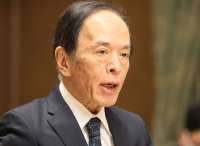STATE BUDGET – JAKARTA. The government has allocated a budget for subsidies and incentives or tax expenditures of more than Rp 1,000 trillion in 2023.
This massive budget consists of expenditures for energy and non-energy subsidies amounting to Rp 271.4 trillion, tax expenditures of Rp 352.8 trillion, property incentives of Rp 3.2 trillion.
Then, there are electric vehicle incentives with a budget of Rp 3.5 trillion, pre-employment card of Rp 4.37 trillion, and People's Business Credit (KUR) subsidies of Rp 450 trillion. So, the total budget reaches Rp 1,085.27 trillion.
The Deputy Director of the Institute for Development of Economics and Finance (Indef) Eko Listiyanto believes that the impact of this massive budget released by the government is minimal to the community.
For example, regarding the budget for tax expenditures. According to Eko, these incentives are generally allocated to industries that do not absorb much labor.
"So these incentives have minimal impact on people's income through labor absorption," Eko told Kontan.co.id, Monday (18/12).
Eko also highlighted the budget for energy subsidies and compensation, which is usually budgeted very large. According to him, this large budget is not proportional to alleviate poverty.
He even noted that the poverty rate has not decreased much in recent years, or the number is around 10% or only drops to 9%.
According to him, the function of subsidies 'as if' only as a shock absorber and cushion for the risk of weakening purchasing power as the economy slows down, so dependence on subsidies is expected to increase.
"In the end, the large state budget is unable to fund programs that have a broad impact on the economy," said Eko.
The total budget for subsidies and incentives or tax expenditures also increased in 2024, to Rp 1,215.7 trillion. This consists of a subsidy budget (energy and non-energy) of Rp 282.7 trillion, tax expenditures of Rp 374.5 trillion, electric vehicle incentives of Rp 3.5 trillion, and KUR subsidies of Rp 585 trillion.
Eko added, this large budget is feared to shift other more productive budgets, for example for energy subsidies. Because, there is a high possibility that the government will maintain the subsidy budget, especially for fuel, so as not to increase during the election. So this energy subsidy budget is expected to increase.
Eko believes that in order for the government's program to have a big impact and benefit the community, especially the lower-middle class, the government should budget a large program for farmers.
This is also in line with the lower-middle class in Indonesia, the majority of whom earn a living by farming.
In addition, Eko believes that the distribution of this large KUR budget is still mostly off-target. So the government needs to fix the data of MSME recipients, especially those who are not yet eligible/able to pay interest normally.
In addition, Eko also suggests that the government prioritize and encourage productive and long-term expenditures such as capital expenditures. Because according to him, in a political situation, the design of the state budget must still be prioritized to drive a more productive economy,
"So it's not just about absorbing the slow purchasing power of the community by continuously adding subsidies and social assistance," he said.
Contacted separately, the Chief Economist of Bank Permata Josua Pardede believes that the government's subsidy/expenditure budget can indeed help maintain the purchasing power of the community, especially the poor and vulnerable to poverty.
In addition, the program is also considered to be able to keep inflation at a low level or remain controlled within the target range of 3% plus minus 1%.
However, Josua gave some notes, especially on the accuracy of subsidy distribution. He believes that there are still many fuel subsidy distributions that are off-target.
"Fuel subsidies are still not targeted and are mostly received by the capable," said Josua.
In addition, the issue of recipient data must also be continuously improved by the Government, to increase the accuracy of subsidy distribution, so that its effects on the lower-middle class are more felt.
/2023/10/26/298096661p.jpg)









